Survival effect of PDGF-CC rescues neurons from apoptosis in both brain and retina by regulating GSK3beta phosphorylation
- PMID: 20231377
- PMCID: PMC2856029
- DOI: 10.1084/jem.20091704
Survival effect of PDGF-CC rescues neurons from apoptosis in both brain and retina by regulating GSK3beta phosphorylation
Abstract
Platelet-derived growth factor CC (PDGF-CC) is the third member of the PDGF family discovered after more than two decades of studies on the original members of the family, PDGF-AA and PDGF-BB. The biological function of PDGF-CC remains largely to be explored. We report a novel finding that PDGF-CC is a potent neuroprotective factor that acts by modulating glycogen synthase kinase 3beta (GSK3beta) activity. In several different animal models of neuronal injury, such as axotomy-induced neuronal death, neurotoxin-induced neuronal injury, 6-hydroxydopamine-induced Parkinson's dopaminergic neuronal death, and ischemia-induced stroke, PDGF-CC protein or gene delivery protected different types of neurons from apoptosis in both the retina and brain. On the other hand, loss-of-function assays using PDGF-C null mice, neutralizing antibody, or short hairpin RNA showed that PDGF-CC deficiency/inhibition exacerbated neuronal death in different neuronal tissues in vivo. Mechanistically, we revealed that the neuroprotective effect of PDGF-CC was achieved by regulating GSK3beta phosphorylation and expression. Our data demonstrate that PDGF-CC is critically required for neuronal survival and may potentially be used to treat neurodegenerative diseases. Inhibition of the PDGF-CC-PDGF receptor pathway for different clinical purposes should be conducted with caution to preserve normal neuronal functions.
Figures
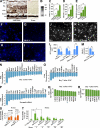

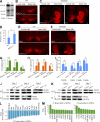
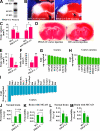
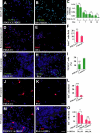
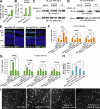

Similar articles
-
Angiogenesis stimulated by PDGF-CC, a novel member in the PDGF family, involves activation of PDGFR-alphaalpha and -alphabeta receptors.FASEB J. 2002 Oct;16(12):1575-83. doi: 10.1096/fj.02-0319com. FASEB J. 2002. PMID: 12374780
-
PDGF-CC blockade inhibits pathological angiogenesis by acting on multiple cellular and molecular targets.Proc Natl Acad Sci U S A. 2010 Jul 6;107(27):12216-21. doi: 10.1073/pnas.1004143107. Epub 2010 Jun 21. Proc Natl Acad Sci U S A. 2010. PMID: 20566880 Free PMC article.
-
Platelet-derived growth factor-DD targeting arrests pathological angiogenesis by modulating glycogen synthase kinase-3beta phosphorylation.J Biol Chem. 2010 May 14;285(20):15500-15510. doi: 10.1074/jbc.M110.113787. Epub 2010 Mar 15. J Biol Chem. 2010. PMID: 20231273 Free PMC article.
-
PDGF-C and PDGF-D signaling in vascular diseases and animal models.Mol Aspects Med. 2018 Aug;62:1-11. doi: 10.1016/j.mam.2018.01.005. Epub 2018 Feb 14. Mol Aspects Med. 2018. PMID: 29410092 Review.
-
Apoptotic and antiapoptotic mechanisms in stroke.Cell Tissue Res. 2000 Jul;301(1):173-87. doi: 10.1007/s004419900154. Cell Tissue Res. 2000. PMID: 10928290 Review.
Cited by
-
The roles of PDGF in development and during neurogenesis in the normal and diseased nervous system.J Neuroimmune Pharmacol. 2014 Mar;9(2):168-81. doi: 10.1007/s11481-013-9479-z. Epub 2013 Jun 15. J Neuroimmune Pharmacol. 2014. PMID: 23771592 Free PMC article. Review.
-
Potential effects of angiogenesis-related factors on the severity of APAC and surgical outcomes of trabeculectomy.BMC Ophthalmol. 2021 Aug 12;21(1):297. doi: 10.1186/s12886-021-02051-w. BMC Ophthalmol. 2021. PMID: 34384366 Free PMC article.
-
Platelet derived growth factor inhibitors: A potential therapeutic approach for ocular neovascularization.Saudi J Ophthalmol. 2015 Oct-Dec;29(4):287-91. doi: 10.1016/j.sjopt.2015.05.005. Epub 2015 Jun 6. Saudi J Ophthalmol. 2015. PMID: 26586980 Free PMC article. Review.
-
mGluR5 Tunes NGF/TrkA Signaling to Orient Spiny Stellate Neuron Dendrites Toward Thalamocortical Axons During Whisker-Barrel Map Formation.Cereb Cortex. 2018 Jun 1;28(6):1991-2006. doi: 10.1093/cercor/bhx105. Cereb Cortex. 2018. PMID: 28453662 Free PMC article.
-
Oncogenic properties of apoptotic tumor cells in aggressive B cell lymphoma.Curr Biol. 2015 Mar 2;25(5):577-88. doi: 10.1016/j.cub.2014.12.059. Epub 2015 Feb 19. Curr Biol. 2015. PMID: 25702581 Free PMC article.
References
Publication types
MeSH terms
Substances
Associated data
- Actions
Grants and funding
LinkOut - more resources
Full Text Sources
Other Literature Sources
Molecular Biology Databases

